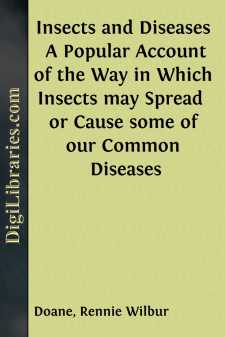Categories
- Antiques & Collectibles 13
- Architecture 36
- Art 48
- Bibles 22
- Biography & Autobiography 813
- Body, Mind & Spirit 142
- Business & Economics 28
- Children's Books 17
- Children's Fiction 14
- Computers 4
- Cooking 94
- Crafts & Hobbies 4
- Drama 346
- Education 46
- Family & Relationships 57
- Fiction 11829
- Games 19
- Gardening 17
- Health & Fitness 34
- History 1377
- House & Home 1
- Humor 147
- Juvenile Fiction 1873
- Juvenile Nonfiction 202
- Language Arts & Disciplines 88
- Law 16
- Literary Collections 686
- Literary Criticism 179
- Mathematics 13
- Medical 41
- Music 40
- Nature 179
- Non-Classifiable 1768
- Performing Arts 7
- Periodicals 1453
- Philosophy 64
- Photography 2
- Poetry 896
- Political Science 203
- Psychology 42
- Reference 154
- Religion 513
- Science 126
- Self-Help 84
- Social Science 81
- Sports & Recreation 34
- Study Aids 3
- Technology & Engineering 59
- Transportation 23
- Travel 463
- True Crime 29
Insects and Diseases A Popular Account of the Way in Which Insects may Spread or Cause some of our Common Diseases
Categories:
Description:
Excerpt
CHAPTER I
PARASITISM AND DISEASE
PARASITES
he dictionary says that a parasite is a living organism, either animal or plant, that lives in or on some other organism from which it derives its nourishment for a whole or part of its existence. This definition will serve as well as any, as it seems to include all the forms that might be classed as parasites. As a general thing, however, we are accustomed to think of a parasite as working more or less injury to its host, or perhaps we had better say that if it does not cause any irritation or ill effects its presence is not noted and we do not think of it at all.
As a matter of fact the number of parasitic organisms that are actually detrimental to the welfare of their hosts is comparatively small while the number of forms both large and small that lead parasitic lives in or on various hosts, usually doing no appreciable harm, often perhaps without the host being aware of their presence, is very great indeed.
Few of the higher animals live parasitic lives. The nearest approach to a true parasite among the vertebrates is the lamprey-eel () which attaches itself to the body of a fish and sucks the blood or eats the flesh. Among the Crustaceans, the group that includes the lobsters and crabs, we find many examples of parasites, the most extraordinary of which is the curious crab known as Sacculina (). In its early stages this creature is free-swimming and looks not unlike other young crabs. But it soon attaches itself to another crab and begins to live at the expense of its host. Then it commences to undergo remarkable changes and finally becomes a mere sac-like organ with a number of long slender root-like processes penetrating and taking nourishment from the body of the unfortunate crab-host.
The worms furnish many well-known examples of parasites, whole groups of them being especially adapted to parasitic life. The tapeworms, common in many animals and often occurring in man, the roundworms of which the trichina () that causes "measly" pork is a representative, are familiar examples. These and a host of others all show a very high degree of specialization fitting them for their peculiar lives in their hosts.
Fig. 1
Fig. 2
Fig. 3
Fig. 1—A lamprey. (After Goode.)
Fig. 2—Sacculina; A, parasite attached to a crab; B, the active larval condition; C, the adult removed from its host. (After Haeckel.)
Fig. 3—Trichina spiralis encysted in muscle of a pig. (From Kellogg's Elementary Zoöl.)
Fig. 4
Fig. 5
Fig. 6
Fig. 4—An external parasite, a bird-louse (Lipeurus ferox).
Fig. 5—A tachina fly (Blepharipeza adusta) the larva of which is an internal parasite.
Fig. 6—Work of an internal parasite, puss-moth larva parasitized by a small ichneumon fly.
From among the insects may be selected interesting examples of almost all kinds and degrees of parasitism, temporary, permanent, external, internal (, , ). Among them is found, too, that curious condition known as hyperparasitism where one animal, itself a parasite, is preyed upon by a still smaller parasite.
"The larger fleas have smaller fleas
Upon their backs to bite um,
These little fleas still smaller fleas
And so ad infinitum."
Coming now to the minute, microscopic, one-celled animals, the Protozoa, we find entire groups of them that are living parasitic lives, depending wholly on one or more hosts for their existence. Many of these have a very remarkable life-history, living part of the time in one host, part in another. The malarial parasite and others that cause some of the diseases of man and domestic animals are among the most important of these.
PARASITISM
Among all these parasites, from the highest to the lowest the process that has fitted them for a parasitic life has been one of degeneration. While they may be specialized to an extreme degree in one direction they are usually found to have some of the parts or organs, which in closely related forms are well developed, atrophied or entirely wanting....



